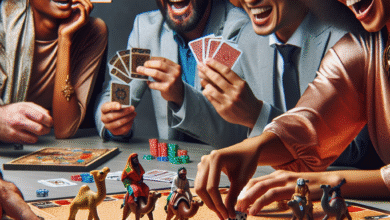The Fascinating World of Chess: A Game for All Ages
Introduction to Chess
Chess is more than just a board game; it’s a captivating battle of wits that has enthralled people for centuries. Played on an 8×8 checkered board, chess involves two opponents each controlling an army of 16 pieces, including pawns, knights, bishops, rooks, a queen, and a king. The game’s objective is simple yet profound: checkmate your opponent’s king, meaning the king is in a position to be captured and cannot escape. This blend of strategy, foresight, and creativity makes chess not just a game but a true intellectual challenge.
A Brief History of Chess
Chess boasts a rich history that spans over a thousand years, with origins tracing back to India around the 6th century AD, where a game called "Chaturanga" was played. From India, it migrated over time to Persia, where it was known as "Shah," which translates to "king." As it spread through the Islamic world, it adapted and evolved, eventually reaching Europe by the 15th century.
The modern rules we know today began to take shape during this renaissance period. In 1475, various pieces were granted new powers, making the game faster and more dynamic than its predecessors. The standardization of these rules gave birth to the chess we recognize today, and it has been instrumental in the game’s enduring popularity.
Objective and Key Rules of Chess
At its core, chess aims to checkmate the opponent’s king. Each type of piece moves in its own unique way:
- Pawns move forward one square but capture diagonally. Upon reaching the opposite side, they can be promoted to any piece (except a king).
- Rooks move straight along rows and columns.
- Knights leap in an "L" shape (two squares in one direction and then one square perpendicular).
- Bishops glide diagonally across the board.
- Queen, the most powerful piece, can move in any direction.
- King moves only one square in any direction and is the piece you need to protect at all costs.
A game can end in several ways: checkmate (the king is trapped), stalemate (the player cannot move and is not in check), or resignation. The simplicity of these rules allows for depth and complexity in strategy.
Gameplay Mechanics: What Makes Chess Unique
Chess is unique for a variety of reasons. First, it has an incredibly high number of possible board configurations—more than the number of atoms in the observable universe! This vastness leads to infinite strategies and games that can last anywhere from a few minutes to several hours depending on the players’ styles.
Moreover, chess transcends language and culture. It is played worldwide across different settings—from coffee shops to grand tournaments. The game’s allure lies not only in its competitive nature but also in the deep psychological interplay between opponents. Every move can be as much about outsmarting the other player as it is about following the rules.
Fun Facts and Trivia About Chess
Here are some intriguing tidbits about chess that you may not know:
- World Chess Champion: The first official World Chess Champion, Wilhelm Steinitz, was crowned in 1886.
- The Chess Clock: This was introduced in the late 19th century to limit the time players took per move, allowing games to move along without dragging on indefinitely.
- Computer vs. Human: In 1997, the chess computer Deep Blue became the first machine to beat a reigning world champion, Garry Kasparov, in a match under standard chess tournament time controls.
- Chess in Space: In 1970, a game of chess was played in space between a Soviet and an American astronaut aboard different spacecraft!
The Legacy and Cultural Impact of Chess
Chess isn’t just a game; it’s a cultural icon. It has inspired countless works of art, literature, and even music. Films like "Searching for Bobby Fischer" and the recent series "The Queen’s Gambit" have further fueled interest in the game, introducing it to new generations. Chess clubs and online platforms enable players of all ages to connect, compete, and improve their skills.
Moreover, chess has proven beneficial to cognitive development, enhancing problem-solving abilities and fostering critical thinking. In educational settings, it is often used as a tool to teach concentration and strategic planning.
Conclusion: Try Chess Today!
Chess is a beautiful amalgamation of strategy, competition, and art that invites everyone to play—regardless of age or experience. Whether you’re a casual player or an aspiring grandmaster, there’s always something new to learn. If you’re interested in trying out this timeless game, you can start with a physical board or numerous online platforms that offer tutorials and live matches.
So gather your family, friends, or even seek out challengers online. Dive into the world of chess and experience the thrill of this grand game firsthand. Happy playing!




